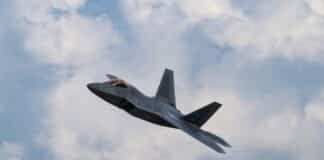In a stunning turn of events, Iran’s ruling regime is reeling from what appears to be a decisive and potentially regime-altering series of Israeli military strikes. Reports emerging from both Iranian and international sources claim the elimination of top-tier leadership within the Islamic Revolutionary Guard Corps (IRGC) and Iran’s military establishment—including the confirmed deaths of IRGC Commander Hossein Salami and Chief of Staff Mohammad Bagheri.
Although conflicting news initially surrounded Bagheri’s fate, Iranian state media later confirmed his death. He was not only the architect of Iran’s missile program but also a key figure in cementing Iran’s ideological and military posture against the West. His ties to the regime’s upper ranks, through both blood and influence, made him indispensable to Supreme Leader Ayatollah Ali Khamenei’s strategic operations. This marks one of the most significant blows to the Islamic Republic’s leadership since the 1979 Revolution.
TARGETED STRIKES, STRATEGIC DECIMATIONS
According to military analysts, Israel’s strike on Tehran wasn’t just an act of retaliation—it was strategic decapitation. Among those reportedly eliminated were:
- Hossein Salami, IRGC Commander, a public face of Iran’s anti-Israel posture.
- Mohammad Bagheri, military chief and mastermind of Iran’s ballistic arsenal.
- Maj. Gen. Gholam Ali Rashid, commander of the strategic “Khatam al-Anbiya” complex.
- Dr. Fereydoon Abbasi, former head of Iran’s Atomic Energy Organization and nuclear scientist.
In a statement, Israeli Prime Minister Benjamin Netanyahu declared, “We are after a very successful opening strike, and with God’s help—we are going to achieve many achievements.”
While details remain fluid, the magnitude of these eliminations is unprecedented. This wasn’t a warning shot—it was a direct challenge to the sustainability of the Iranian regime itself.
PREVENTIVE WARFARE OR JUSTIFIED DEFENSE?
Critics in the international legal community may debate whether Israel’s actions constitute a “preventive war,” a complex and often controversial classification in international law. But make no mistake: Iran has long been a sworn enemy of the Jewish state.
The Islamic Republic has exported terrorism and explicitly declared its intent to annihilate Israel. Israel’s preemptive action may be seen less as a provocation and more as a necessary defense. After all, can a regime that supports death chants in its parliament and funds terror across four continents still demand the protections of international law while violating them with impunity?
A CRUMBLING REGIME?
The death of Bagheri—long considered a potential successor to the current military and political leadership—has left a vacuum that is not easily filled. In a regime defined by loyalty, paranoia, and absolute control, the sudden loss of several senior figures could spark chaos. Already, new IRGC leadership has been hastily announced—an effort by Tehran to project stability. But beneath the surface, there are signs of deep unrest.
THE RETURN OF REZA PAHLAVI?
In exile for over four decades, Reza Pahlavi—the son of Iran’s last Shah—has reemerged as a vocal critic and a symbolic alternative to the Islamic Republic.
In a forceful statement issued in Persian and shared across social media platforms, Pahlavi denounced Khamenei as a “reckless leader” dragging Iran into a war “that does not belong to the people.” He urged Iran’s armed forces, police, and intelligence officers to abandon the regime and “join the people.”
“This is not Iran’s war,” Pahlavi wrote. “It is Khamenei’s war and the Islamic Republic’s war.”
This is more than rhetoric. Pahlavi’s words resonate with a younger, more connected Iranian generation that is increasingly disillusioned with clerical rule. Protests against economic hardship, repression, and religious tyranny have rocked Iran for years. The question has always been: would the military flip?
Now, with the upper ranks of the armed forces obliterated and public sentiment at a boiling point, that question might finally be answered.
THE CIA FACTOR AND GLOBAL CALCULATIONS
Make no mistake—the intelligence world is watching. American involvement behind the scenes is all but certain. The CIA, which has long maintained networks in and around Iran, is likely playing a role—providing intelligence, funding dissidents, and perhaps more.
While the Trump administration has remained officially silent, recent State Department statements condemning Iranian escalation hint at deeper coordination. The U.S. may not be pulling the trigger, but it is undoubtedly helping to load the gun.
Iran is not just an Israeli problem—it is the world’s largest state sponsor of terrorism. With Hezbollah threatening Lebanon, Shiite militias destabilizing Iraq, and the Houthi attacks in Yemen crippling global shipping, the West has much to gain from a regime change in Tehran.
A NEW IRAN ON THE HORIZON?
As smoke still rises over Tehran and funeral processions are likely being staged for the cameras, the real drama is just beginning.
Could this be the moment when the Islamic Republic finally falls?
Could this be the hour when the people of Iran—tired, brave, and yearning to be free—rise against the mullahs?
Pahlavi’s direct appeal to the military isn’t just a nostalgic longing for monarchy—it’s a calculated, timely call to action. The regime has lost its grip on fear, and when fear collapses, revolutions are born.
In 1979, the world watched as a Shah fell. In 2025, the world may witness an Ayatollah doing the same.
FINAL THOUGHTS
Regime change in Iran is not just a regional matter—it’s a global necessity. With its leadership crippled, its population restless, and its enemies emboldened, the Islamic Republic may be entering its final chapter.
America must stand ready not just to applaud from the sidelines but to shape what comes next: a free Iran, a secure Israel, and a more stable Middle East.
This is not the end of the Islamic Republic yet—but it is the beginning of the end.





